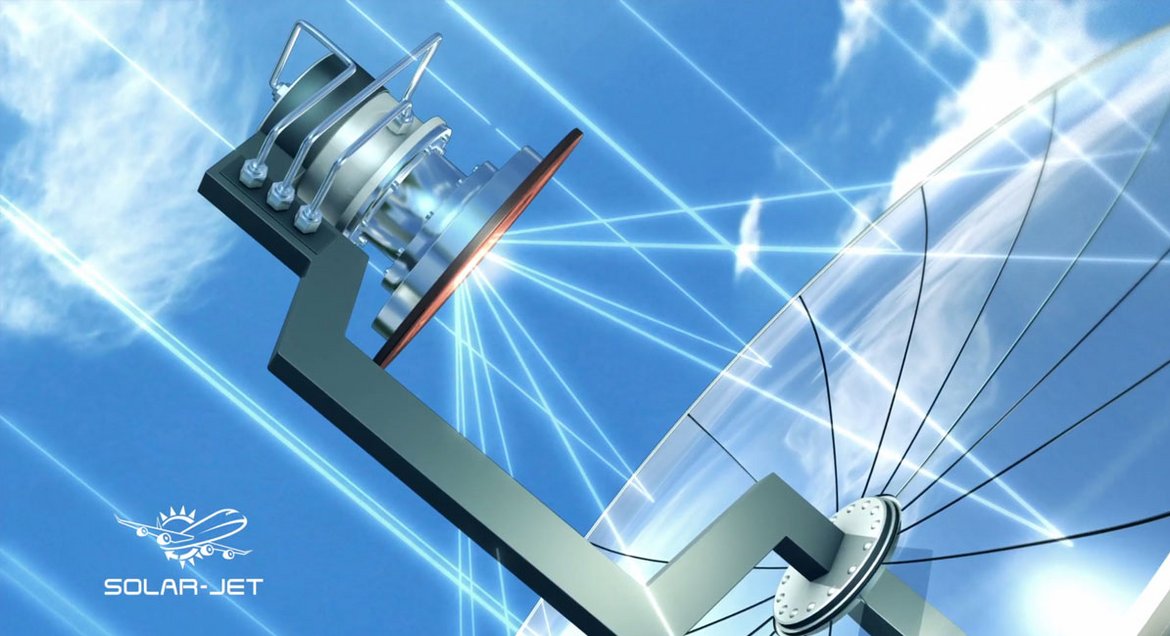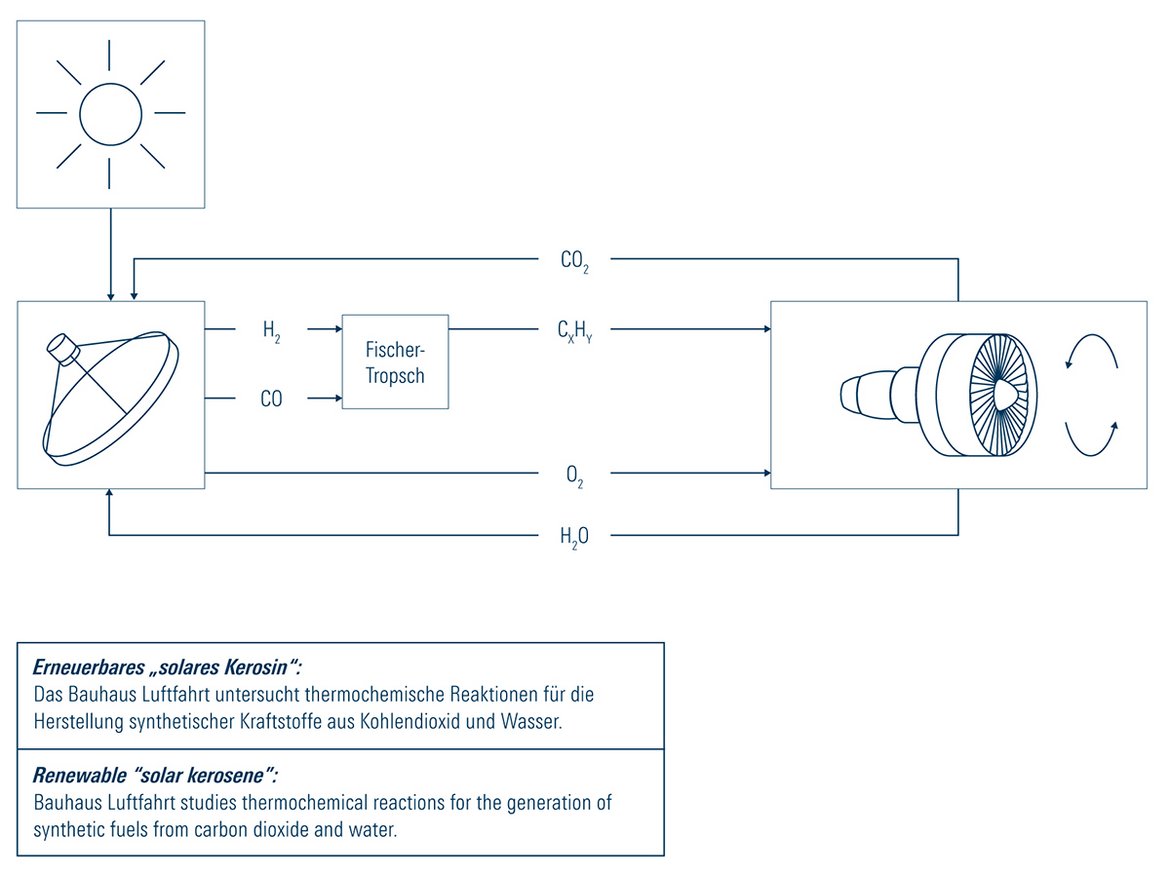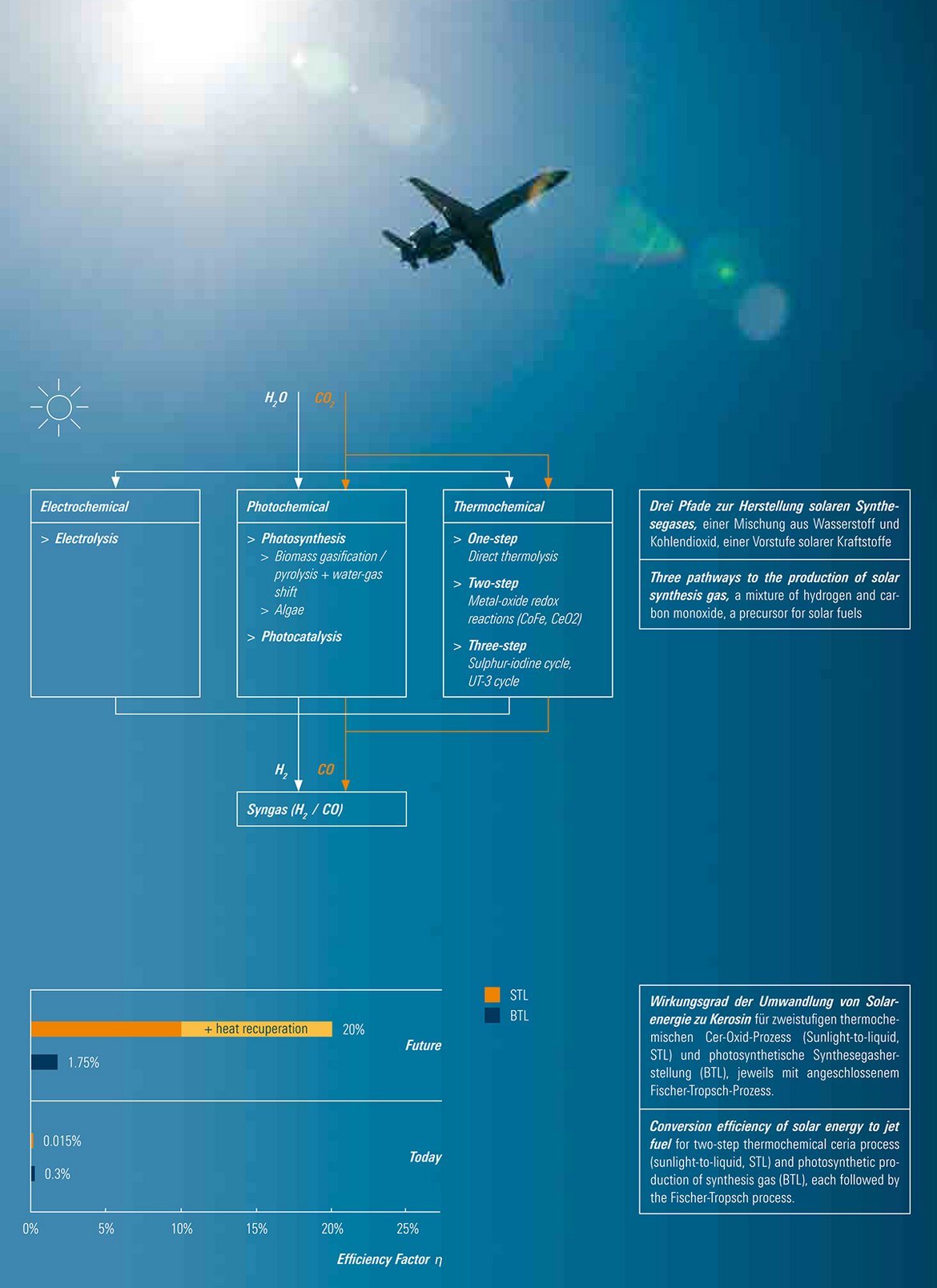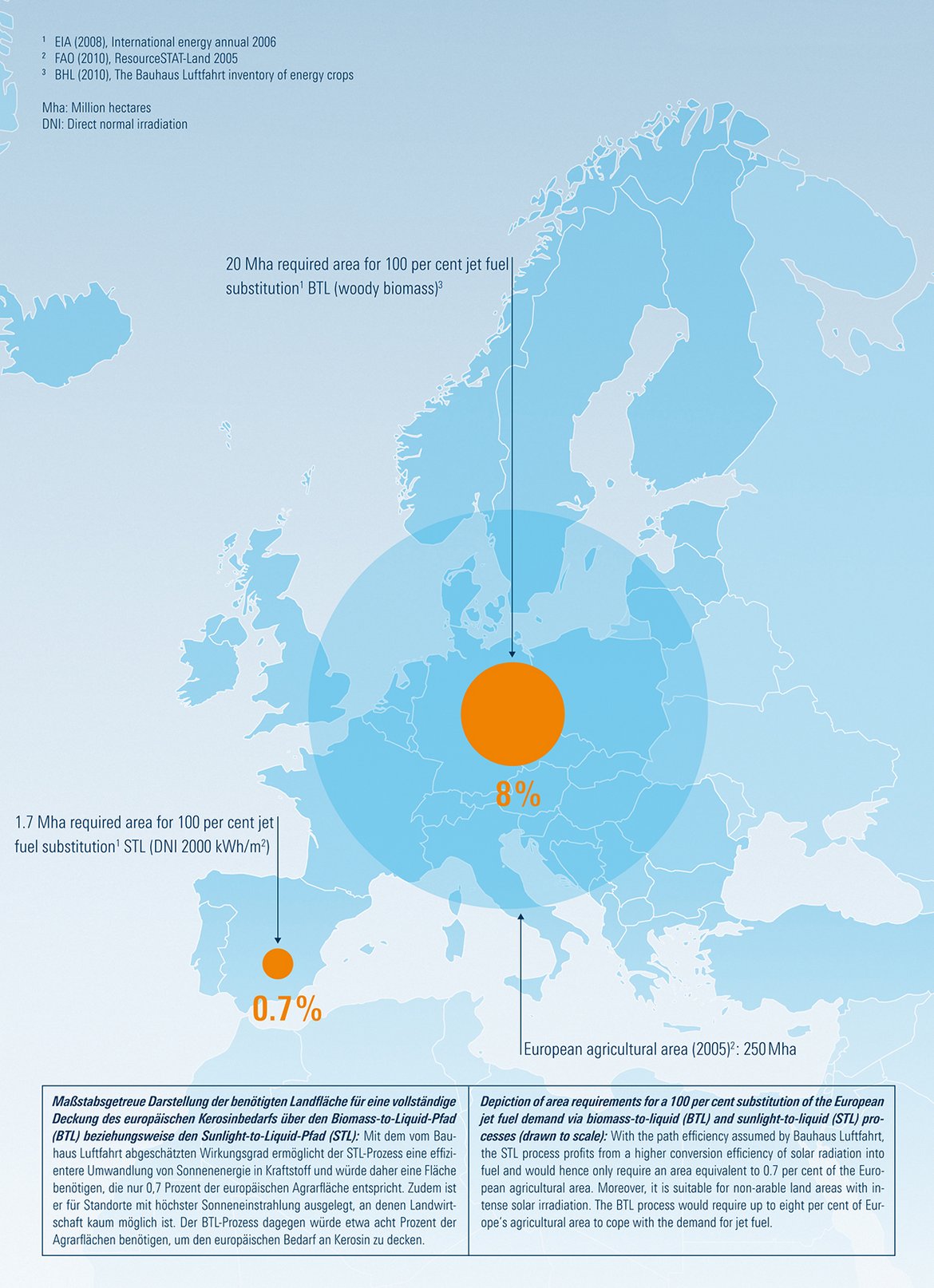The limited availability of arable land as well as the rising world population’s food-versus-fuel conflict form a strong driving force for the medium-term development of alternative aviation fuels that are carbon-neutral, but not based on biomass. The direct storage of solar energy in the form of fuels, avoiding the detour via biomass, represents a promising way towards such solar fuels. In the course of the European Union-funded project SUN-to-LIQUID with international partners, Bauhaus Luftfahrt explores new thermochemical reaction pathways in order to generate synthetic kerosene from atmospheric carbon dioxide and water by utilising solar energy at elevated temperatures.
Analysis of conversion processes
For the production of solar fuels, in principle, three pathways can be followed, each of which produces so-called synthesis gas, a mixture of hydrogen and carbon monoxide. Making use of the well-known Fischer-Tropsch process, synthesis gas can be further converted into drop-in capable jet fuel or other liquid fuels. Among the different pathways, electrochemistry is limited to about 18 percent efficiency today, partly due to a two-fold energy conversion involving solar electricity, while photochemistry is even limited to roughly 3.5 percent in the case of natural photosynthetic conversion in plants. The two-step solarthermochemical conversion is still subject to research, but shows a long-term efficiency potential of 40 percent.
In a thermochemical process, high-temperature heat gained through the concentration of solar energy is used to drive a two-step chemical cycle where the material is reduced at about 1,500 degrees Celsius and reoxidised at about 800 degrees Celsius. The overall reaction results in the conversion of water and carbon dioxide to synthesis gas and oxygen. A comparison conducted by Bauhaus Luftfahrt in terms of efficiency between the thermochemical and the Biomass-to-Liquid (BtL) process shows equally low values today as consequence of their low current technical maturity, particularly in case of the solarthermochemical process. However, the long-term efficiency potential of solar fuels production is much higher, with the thermochemical cycle efficiency reaching values ten times as high as the BtL process, making solar fuels a promising alternative to biofuels.
Perspectives for a large-scale supply
Besides the efficient conversion of sunlight, the principal argument for solar fuels is the abundance of the solar resource. Bauhaus Luftfahrt’s assessment confirmed that a small fraction of the world’s desert area would be sufficient to satisfy any reasonable aviation fuel demand. An analysis of the solarthermochemical fuel pathway reveals a manageable water demand for fuel synthesis and cleaning of the mirror field; the contribution to the energy and cost budget is insignificant even in case of seawater desalination and subsequent pipeline transport.
The supply with volume quantities of carbon dioxide (CO2), which is required as carbon source if sunlight is to be converted into drop-in capable hydrocarbon fuels, appears more challenging. At large scale, it seems implausible to utilise waste CO2 due to its limited availability. Early demonstrations of carbon capture from air indicate that energy and cost penalties will be significant, but not prohibitively high. An economic analysis showed that high sunlight-to-fuel conversion efficiency and the sufficient availability of sustainable CO2 at moderate cost are key requirements to achieve competitive pricing in comparison to fossil or biomass-based fuels. Based on its current cost model, Bauhaus Luftfahrt has found that conversion efficiencies slightly above ten percent will be required to amortise the expected cost of the mirror field, which is well within thermodynamic limits for solarthermochemical cycles.
“Proof of concept” completed successfully; field test in a relevant operational environment started
With the first ever production of synthesised “solar” jet fuel in early 2014, the EU-funded SOLAR-JET project has successfully demonstrated the entire production chain for renewable kerosene, obtained directly from sunlight, water, and carbon dioxide (CO2), at laboratory scale. In the follow-up EU-funded project SUN-to-LIQUID, this promising production pathway is now brought to the next level of development by an international consortium coordinated by Bauhaus Luftfahrt. In this project, the efficiency of the solarthermochemical conversion will be increased and the entire process chain will be demonstrated in a relevant operational environment in a pilot plant in Spain. This field test will yield valuable information with respect to the technical, environmental, and economic potential of a future industrial implementation.




